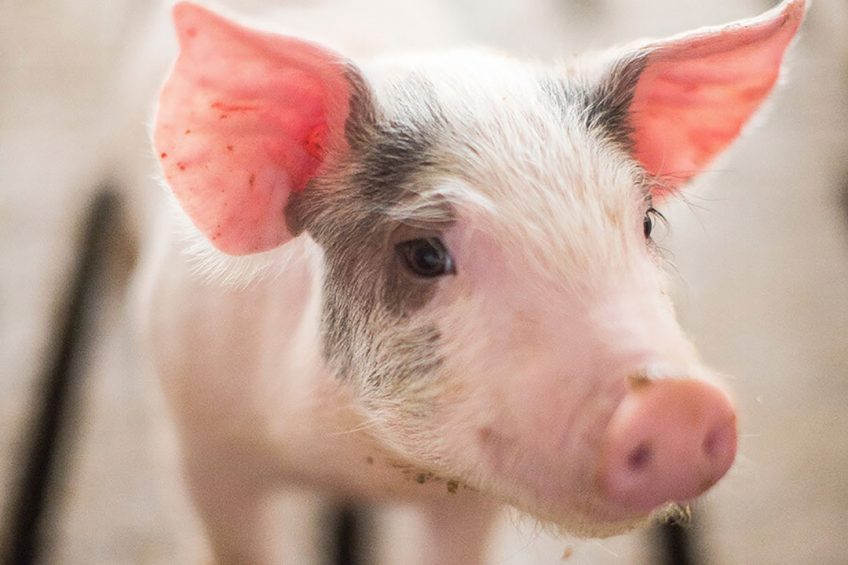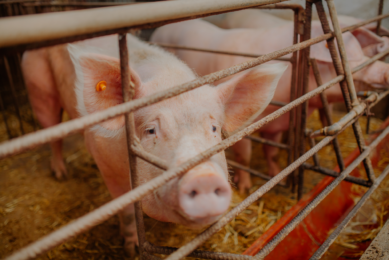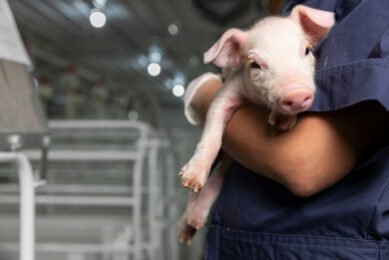Helping piglets to adapt faster after weaning

The weaning gap can lead to a wide array of problems, varying from welfare issues and bacterial challenges to even death. Getting piglets accustomed quickly to their new surroundings is therefore a must. How can a piglet’s gut be helped to perform its new role better after weaning?
Young piglets at weaning face an array of pathogenic challenges in the gut, which can result in poor growth, higher feed costs due to poor conversion ratios, welfare issues and even death. Piglets initially derive the bacteria within their gut from the environment and their mother. However, the immature gut is vulnerable to invasion by disease-causing organisms, especially at weaning, when the animal must transition from sow’s milk to a compound feed. Several factors at weaning influence the ability of the piglet to thrive and grow. These include the ability of the structures in the gut and associated organs to increase in size – such as the pancreas for enzyme secretion and the surface area of villi lining the tract – in order to adapt to the new type of feed, which dictates the effectiveness of digestion and the nutrients available for growth and health. In addition, the piglet must establish an appropriate gut microflora and responsive immune system at the same time.
Weaning gap
Scientists have long recognised the so-called “weaning gap” in immunity and gut development during the transfer from a milk-based to a cereal-based diet in nursery pigs. This is typically characterised by higher susceptibility to diarrhoea and other gastric disorders, including challenges from potentially life-threatening bacteria, as well as inadequate immune responses.
In the last 30 years, research has focused on the role and importance of the hindgut on digestion and growth efficiency in agricultural animals. That has resulted in the development of various technical ingredients for direct use in feed, which influence digestion and nutrient availability for the animal.
Since 1999, the traditional use of antibiotics in feed has been banned or limited in many countries. This was due to concerns regarding the development of resistant pathogenic strains and to free up the use of these products in humans for “drugs of last resort” against medically resistant diseases. However, this development work has had many more far-reaching consequences, as many zootechnical products have benefits beyond merely the control of disease-causing organisms. Ongoing research is now looking into their role in animal behaviour, as well as nutrient supply and welfare. Their various proven modes of action include inhibiting the colonisation of disease-causing pathogenic organisms, helping to “feed” the cells lining the gut to allow faster development and promoting the immune system and its responses to challenges.
Alternatives to antibiotic use
Over the years, prebiotics and other specialist compounds have been identified and trialled as alternatives to antibiotic use in feed. In more recent times, combinations of zootechnical ingredients have been developed that have multi-factorial benefits in the gut, leading to cumulative benefits over and above those of the individual ingredients themselves.
Alltech has worked on many different compounds that can be used as alternatives to antibiotics and which have now been shown to have complementary modes of action. Viligen is a product that contains a blend of short-chain fatty acids (SCFA), prebiotics and minerals, developed through more than 30 years of research with extensive feeding trials in piglets. The active ingredients included are all involved in gut development and digestive efficiency, promoting immunity and optimising the gut environment to allow the best digestion and absorption of nutrients.
Data on nursery pigs in North America
Recent data on nursery pigs from trial sites in North America have shown typical benefits of supplementing the blend of SCFA, prebiotics and minerals into piglet starter diets. In the first trial, 1,008 piglets, weighing 6.3 kilogrammes at the start of the trial (weaning), were equally distributed into pens in a randomised, replicated research trial. Researchers measured performance from two periods post-weaning.
At 11 days after weaning, the piglets fed the blend had a significantly higher average daily gain (ADG 0.36kg vs 0.33kg; P=0.03) and feed intake (ADFI 0.37kg vs 0.34kg; P=0.02). This led to a higher overall gain in this period for the piglets fed the blend (4.01kg vs 3.67kg; P=0.03) and a numeric improvement in feed to gain ratio from 1.04 in the control to 1.02 for the group fed the blend.
In addition, two piglets died, and six were removed in the control group, whereas there were no deaths and only three removed in the group of piglets fed the blend. In the period from 11–23 days after weaning, there remained a strong trend in better body weight gain for the pigs fed the blend (28.24kg vs 27.54kg; P=0.06).


Second trial
In the second trial, piglets fed diets with or without supplementation of the blend of SCFA, prebiotics and minerals over a 24-day period post-weaning had a significantly better ADG (0.62kg vs 0.55kg) and ADFI (0.73kg vs 0.65kg) and no deaths (two dead in the control group). This resulted in significantly increased (P<0.05) body weight gain (blend: 14.93kg vs control: 13.20kg).>
Further recent research used a total of 672 piglets fed either a control diet or one supplemented with the blend from weaning for 23 days. Figure 1 shows the significant benefits measured in ADFI (11%) and ADG (12%).
These benefits resulted in a numeric improvement in feed to gain ratio (Figure 2), demonstrating the increased efficiency of nutrient absorption and utilisation. Supplementation with the blend resulted in an overall increase in body weight at the end of the trial, with the blend group reaching 14.8kg compared to 13.1kg in the control group. Mortality was reduced from 1.5% in the control-fed piglets to 0.3% in the group fed the blend, and morbidity dropped by 1.5% down to 4.2% for the piglets fed the blend. The economic benefits were assessed from the latter trial. They showed a return on investment of € 16.60 when a value of € 1.06 per kg of liveweight and a cost of € 5.61 per kg feed was applied.
The benefits of feeding the blend of SCFA, prebiotics and minerals to nursery pigs were attributed to faster and more stable adaptation at weaning of hindgut and digestive function, resulting in improved nutrient availability.
The trials showed that feeding Viligen to piglets at weaning promoted growth, welfare and animal health cost-effectively. Using a combined zootechnical feed ingredient that has been developed to address the multiple challenges typically observed on-farm offers the most practical approach for pig producers.
References available on request.











